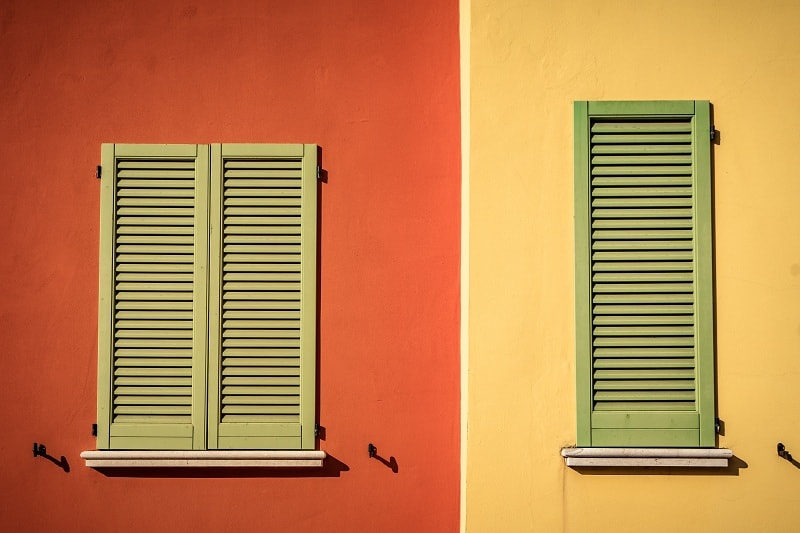Paint windows are more difficult to paint than doors because they contain so many different surfaces, especially small-paned types criss-crossed with slim glazing bars. There is also the additional problem of paint straying onto the glass.
The ideal is a near paint line that covers the bedding putty and extends onto the glass surface by about 3 mm to seal the joint and prevent condensation from running down between putty and glass.
With hinged windows, the edges of the casement or top opening light should be painted to match the color used on the inside of the windows. With double-hung sliding sash windows, the top and bottom edges of each sash and the top, bottom, and sides of the frame are all painted to match the inner face of the sashes.
Remove the window hardware before you start painting. On casement windows tap a nail into the lower frame rebate and link them with a stiff wire to stop the casement from swinging open or shut.
For best results, sash windows should be removed from their frames before painting. Modern spring-mounted windows are easy to release from their frames. With older cord-operated types, remove the staff beads first to free the sashes.
Although quite a major task, take the opportunity to renew the sash cords. This makes it possible to cut the cords to free the windows. Some making good and finishing off will have to be done after the window is reassembled.
Paint windows casement
- Remove the window furniture from the opening casement and wedge the window open while you work. Tackle the glazing bars and edge moldings first, then the face of the surrounding casement frame, and finally the hinged edge of the casement paint the other edges from the outside.
- Move on to paint the glazing bars and edge moldings of the fixed casement use masking tape or a paint shield to ensure near, straight edges here and on the opening casement; the paint should overlap the glass by about 3 mm. paint the face of the surrounding casement frame.
- Paint the outer frame, then the center frame member between the opening and fixed casements. Complete the job by painting the window and the rebate into which the opening casement closes.
Painting sash window
- To paint sash windows without removing the sashes from their frames, start by raising the bottom sash and lowering the top one. Paint the lower half of the top sash. Including its bottom edge, the exposed parting beads at the top and bottom, and the exposed sides of the frame itself.
- When the paint is touch-dry, reverse the sash positions and paint the upper half of the top sash, including its top edge, and the exposed and unpainted parting beads and frame sides.
- Finish off painting the face and edges of the inner sash, the staff beads, and any other trim moldings around the windows. Finally, paint the window sill. Leave the sashes ajar until the paint has dried to avoid components sticking.
Painting around glass
- Stick masking tape to the glass with its edge 3mm from the wood. Paint the surrounding wood, removing the tape when the paint is touch-dry.
- Alternatively, hold a paint shield against the edge of the glazing bar or surrounding molding while painting. Wipe the shield regularly to prevent smears.
Using stain
Test the stain on an offcut of the same wood, or in an inconspicuous area. if necessary, dilute it. Use a clean lint-free cloth to apply stain to bare wood. if the result is too pale, apply further coats when the first is dry. Avoid overlapping parallel bands of stain; the overlap will show up as a darker area when the stain dries.
Conclusion
To clean up an untidy paint edge on the glass, use a ruler and a very sharp knife to cut a clean edge, and carefully scrape off the excess paint up to the cut line.
FAQ
What kind of paint do you use on a window?
I use a light coat of paint on a window every time I do a new coat. It’s important to fully naturally see through the window and know that the area is clean.
What is the best paint for glass windows?
The best paint for glass windows is a new color that is becoming more popular, black. It is hard to tell the difference between black paint and other paint, so it is important to choose the right one for your window.
Do I need to the prime glass before painting?
No, you don’t need to prime glass before painting.

